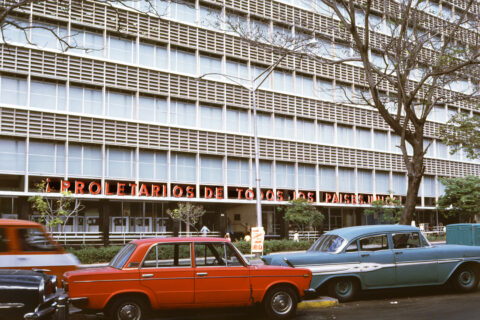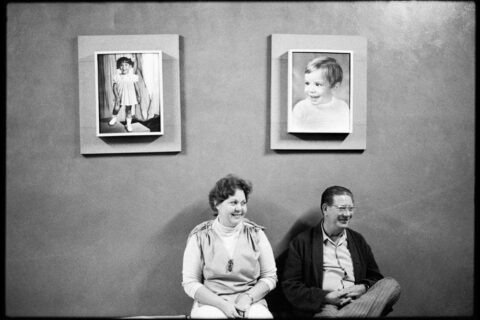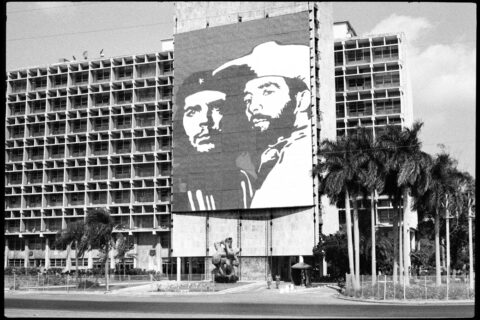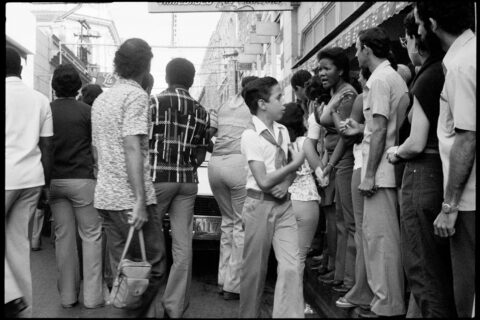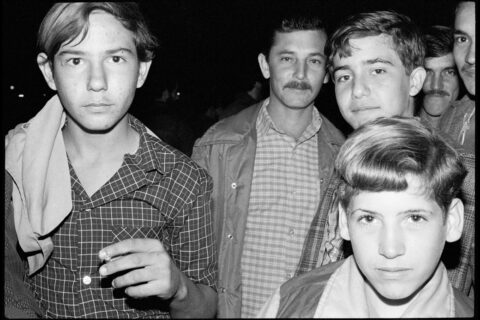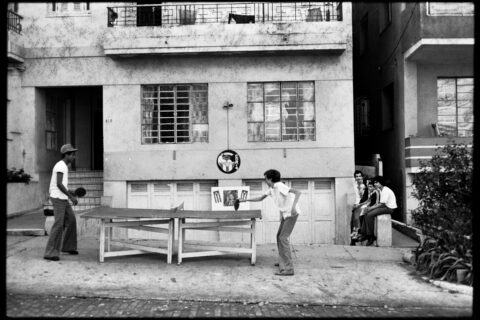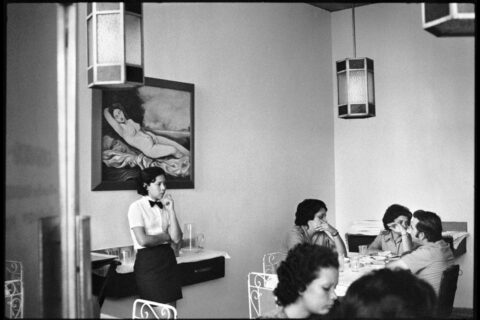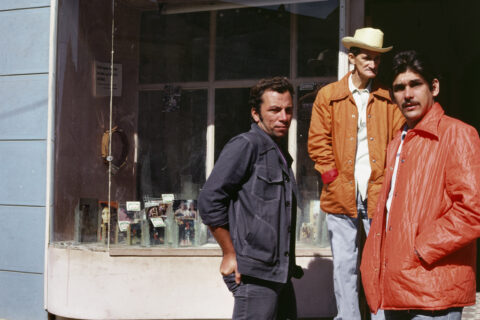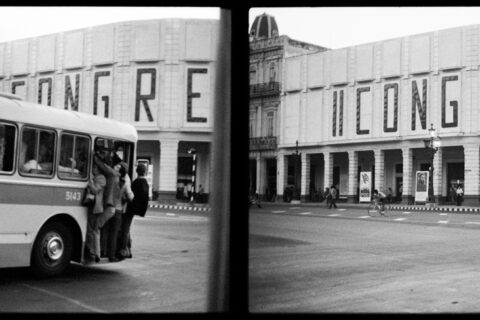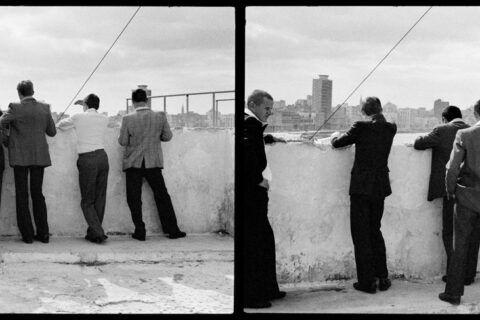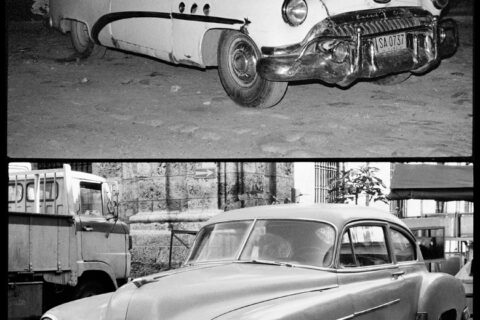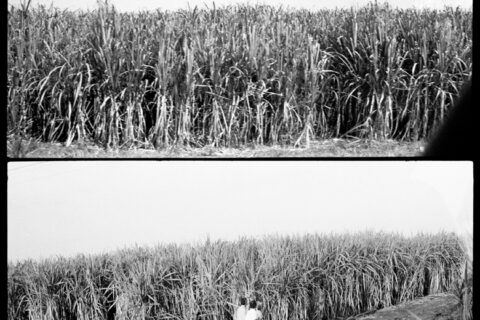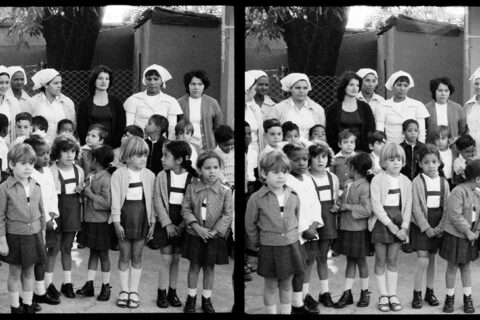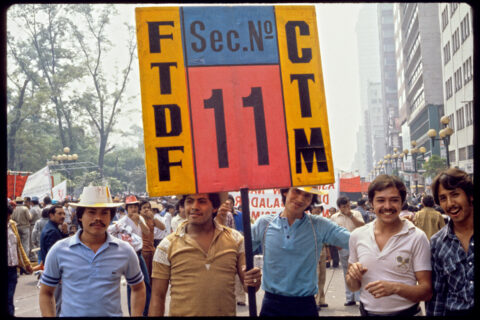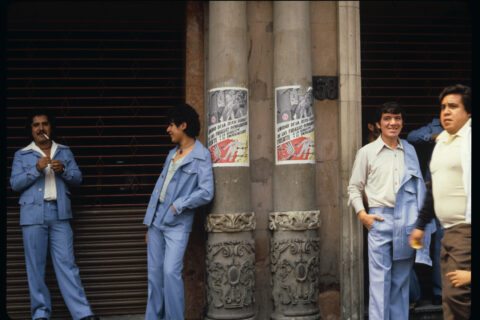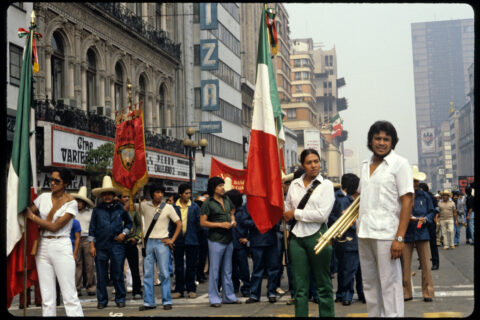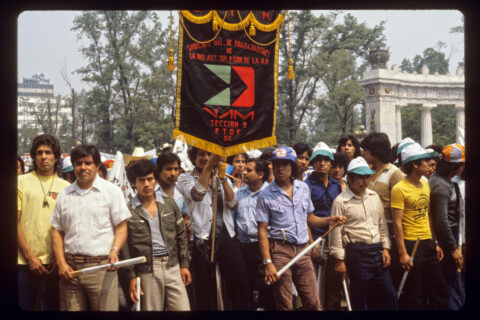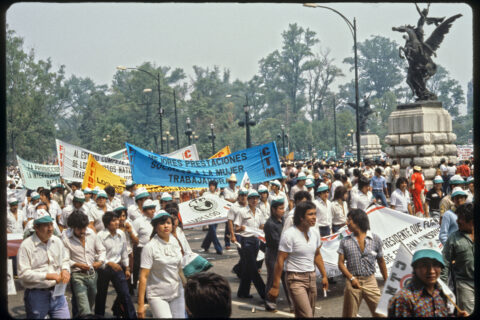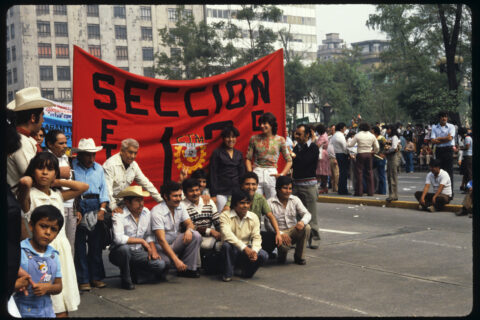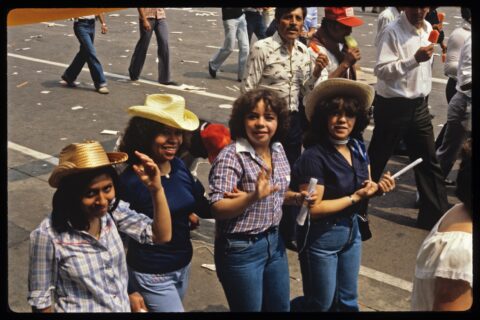Martha Rosler Martha Rosler, 1981: The year the future began
26/05/2018 – 31/08/2018
Eröffnung: Freitag, 25. Mai 2018, 18–21 Uhr
Opening: Friday, May 25, 2018, 6–9 pm
Galerie Nagel Draxler
Elisenstraße 4-6
50667 Köln
Öffnungszeiten / Hours:
Mittwoch – Freitag 11–18 Uhr / Wednesday – Friday 11am–6pm
Samstag 11–16 Uhr / Saturday 11am–4pm
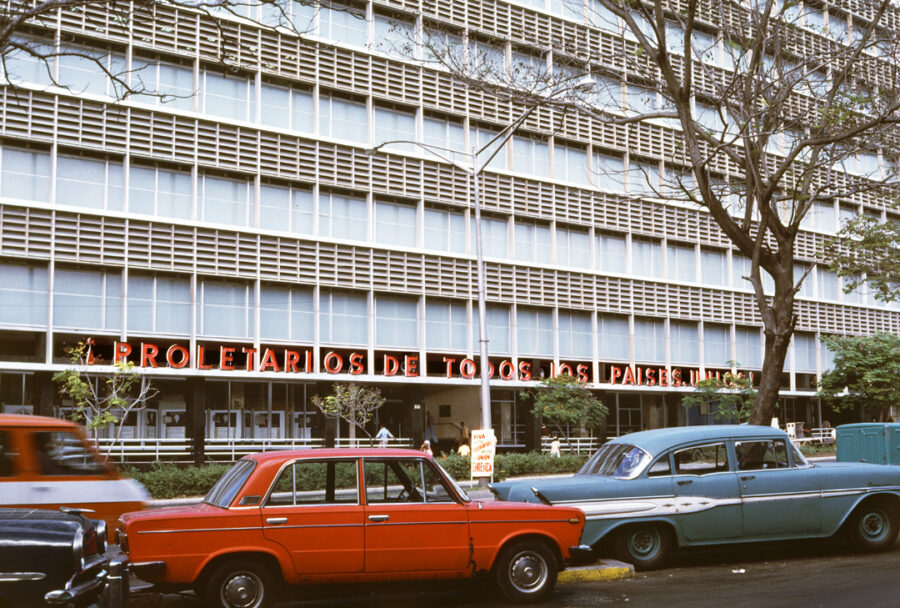
Martha Rosler
„Party Building“, 1981
aus der Serie: „Cuba“
C-Print
„Photo Shop“, 1981
aus der Serie: „Cuba“
Silbergelatineabzug
„Plaza de Revolucion“, 1981
aus der Serie: „Cuba“
Silbergelatineabzug
„Street Scene“, 1981
aus der Serie: „Cuba“
Silbergelatineabzug
„Late Night Concert, Trinidad“, 1981
aus der Serie: „Cuba“
Silbergelatineabzug
aus der Serie: „Cuba“, 1981
Silbergelatineabzug
aus der Serie: „Cuba“, 1981
Silbergelatineabzug
„Men, Shop, Window“, 1981
aus der Serie: „Cuba“
C-Print
„Il Congreso, Havana“ 1981
aus der Serie: „Cuba“
Silbergelatineabzug
„Soviet Sailors at El Morro“, 1981
aus der Serie: „Cuba“
Silbergelatineabzug
„Cars“, 1981
aus der Serie: „Cuba“
Silbergelatineabzug
„Cane Fields“, 1981
aus der Serie: „Cuba“
Silbergelatineabzug
„Guerrilleritos del Escambray Kindergarten, Trinidad“, 1981
aus der Serie: „Cuba“
Silbergelatineabzug
„Mexico Series“, 1981
C-print
„Mexico Series“, 1981
C-print
„Mexico Series“, 1981
C-print
„Mexico Series“, 1981
C-print
„Mexico Series“, 1981
C-print
„Mexico Series“, 1981
C-print
„Mexico Series“, 1981
C-print
Ausstellungsansicht, 2018
„Martha Rosler, 1981: The year the future began“
Galerie Nagel Draxler, Köln
Photo: Simon Vogel
Ausstellungsansicht, 2018
„Martha Rosler, 1981: The year the future began“
Galerie Nagel Draxler, Köln
Photo: Simon Vogel
Ausstellungsansicht, 2018
„Martha Rosler, 1981: The year the future began“
Galerie Nagel Draxler, Köln
Photo: Simon Vogel
Ausstellungsansicht, 2018
„Martha Rosler, 1981: The year the future began“
Galerie Nagel Draxler, Köln
Photo: Simon Vogel
Ausstellungsansicht, 2018
„Martha Rosler, 1981: The year the future began“
Galerie Nagel Draxler, Köln
Photo: Simon Vogel
Ausstellungsansicht, 2018
„Martha Rosler, 1981: The year the future began“
Galerie Nagel Draxler, Köln
Photo: Simon Vogel
Ausstellungsansicht, 2018
„Martha Rosler, 1981: The year the future began“
Galerie Nagel Draxler, Köln
Photo: Simon Vogel
Press Release
Martha Rosler, 1981: El año en el que el futuro comenzó
Martha Rosler, 1981: The year the future began
Curated by Jorge Ribalta, originally organized by àngels barcelona
The exhibition, which is curated by Jorge Ribalta and was originally organized by àngels barcelona, presents a group of mostly unpublished photographs, taken in 1981, a key moment in the neo-vanguardist politicization of Rosler's work. That year, Rosler published her book 3 Works, which synthesized some key works from the 1970s and which marked a turning point in her career, partly because it included the publication of the essay "In, Around and Afterthoughts ... On Documentary Photography," one of the key theoretical texts on the "reinvention" of the documentary. (Also in this book was a work centering on the coup in Chile and a visit to northern Mexico.) Further, in that same year she was part of a group of North American artists and intellectuals traveling to Cuba, while a few months later, she participated in the second Latin American Colloquium of Photography in Mexico City. Her artistic and intellectual activity is indissociable from the democratic struggles in Latin America. With the various projects she was working on at the time, this became a biographically crucial moment for her (marked by her return to New York after over a decade in California and Canada), that made her contribute decisively to the paradigm shift in documentary discourse.
In January of 1981, Rosler travelled to Cuba as part of a group of artists and intellectuals (many of them friends) organized by Ana Mendieta and Lucy Lippard. Then, in late April, she spoke at the panel on "photography as struggle" at the second Coloquio Latinoamericano de Fotografía in Mexico City, after which she joined in the May Day demonstration in the center of the city. A couple of days later, on May 3, she marched to the steps of the Pentagon in Washington D.C. as part of the largest anti-war demonstration in a decade, opposing U.S. intervention in El Salvador.
Rosler's solidarity with the Latin American democratic struggles of the 1970s is essential for understanding the politicization of her work. The revolutionary movements became the opposite side of the coin of 1980s neoliberalism. Similarly, the critical "reinvention" of documentary photography and the reaction against the first symptoms of the regressive political wave were part of the same ideological and aesthetic agenda. In hindsight, 1981 represented the end of the potentiality, openness, and experimentation of the 1970s (a product of post-1968 progressive public policies worldwide), and the effective beginning of the Thatcher-Reagan era, which determined the entire political and cultural landscape of subsequent decades.
But, simultaneously to its historical edge, this exhibition raises important questions for today. As we enter the Trump era, the images from 1981 join the current moment of meaning and become active members of a conversation between the artist, the period of time in which they were produced, and the minds of contemporary viewers. Even more so than before, we consume the world through images, and any response to them is rooted in our social knowledge of the world. That is to say, if we surround ourselves with images that emphasize the aesthetics and form a neoliberal society over their political dimension, they will also breed an imperialist and conformist sensibility across all aspects of cultural life. In this respect, this series offers us an archology of the present.
__________________________________________
Martha Rosler, 1981: El año en el que el futuro comenzó
Martha Rosler, 1981: The year the future began
Kuratiert von Jorge Ribalta für àngels barcelona 2017
Die Ausstellung präsentiert eine Gruppe von bisher weitgehend unveröffentlichten Fotoarbeiten aus dem Jahr 1981, einem Schlüsselmoment der Politisierung im Werk der amerikanischen Künstlerin Martha Rosler.
Im Januar 1981 nahm Rosler zusammen mit einer Gruppe befreundeter KünstlerInnen und Intellektuellen an einer von Ana Mendieta und Lucy Lippard organisierten Reise nach Kuba teil. Ende April sprach sie auf der Podiumsdiskussion "Fotografie als Kampf" beim zweiten Coloquio Latinoamericano de Fotografía in Mexico-City und ging im Anschluss daran zur 1. Mai Demonstration im Zentrum der Stadt. Ein paar Tage später, am 3. Mai, partizipierte sie an der größten Antikriegsdemonstration der Dekade, die gegen die US-Intervention in El Salvador gerichtet war und vor dem Pentagon in Washington D.C. stattfand.
Im selben Jahr veröffentlichte Rosler ihr Buch 3 Works, das Hauptwerke aus den 1970er Jahren zusammenfasst und einen Wendepunkt in ihrer Karriere markiert. Es enthält mit dem Essay "In, Around and Afterthoughts... On Documentary Photography" einen der wichtigsten theoretischen Texte zur "Neuerfindung" der Dokumentarfotografie. Die verschiedenen Projekte, an denen Rosler arbeitete, machten diese Zeit zu einem entscheidenden Moment für sie, der auch durch ihre Rückkehr nach New York nach Aufenthalten von mehr als einem Jahrzehnt in Kalifornien und Kanada geprägt war und in dem sie maßgeblich zum Paradigmenwechsel im Diskurs der dokumentarischen Fotografie beitrug.
Roslers Solidarität mit den lateinamerikanischen Kämpfen um Demokratie in den 1970er Jahren ist für das Verständnis der Politisierung ihrer Arbeit unerlässlich. Die revolutionären Bewegungen wurden zur Gegenseite der Medaille des Neoliberalismus der 1980er Jahre. Ebenso gehörten die kritische "Neuerfindung" der Dokumentarfotografie und die Reaktion auf die ersten Symptome der regressiven politischen Welle zur gleichen ideologischen und ästhetischen Agenda. Im Rückblick bedeutete 1981 das Ende der Potentiale, der Offenheit und der Experimentierfreudigkeit der 1970er Jahre (die das Produkt internationaler progressiver Politik nach 1968 waren) und den effektiven Beginn der Thatcher-Reagan-Ära, die die gesamte politische und kulturelle Landschaft der folgenden Jahrzehnte bestimmte.
Gleichzeitig zu ihrem historischen Bezug wirft diese Ausstellung wichtige Fragen für die Gegenwart auf. Vor dem Hintergrund der Trump-Ära verbinden sich die Bilder von 1981 mit der gegenwärtigen Stimmung. Noch mehr als zuvor konsumieren wir die Welt durch Bilder und jede Reaktion auf sie ist in unserem gesellschaftlichen Bewusstsein verwurzelt. Wenn wir uns mit Bildern umgeben, die auf eine neoliberale Ästhetik setzen und eine neoliberale Gesellschaft spiegeln, werden diese auch eine imperialistische und konformistische Sichtweise auf sämtliche Aspekte des kulturellen Lebens hervorbringen. Insofern bietet die Ausstellung auch eine Archäologie der Gegenwart.
